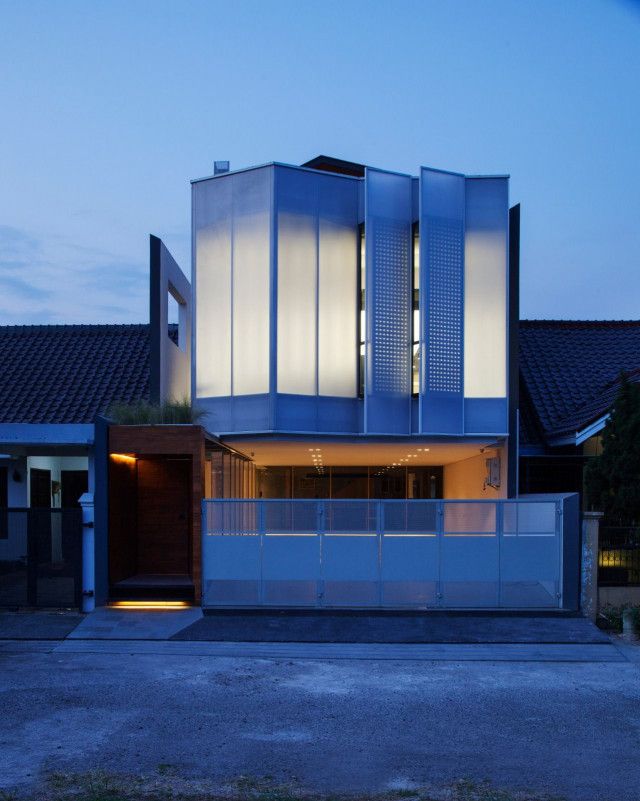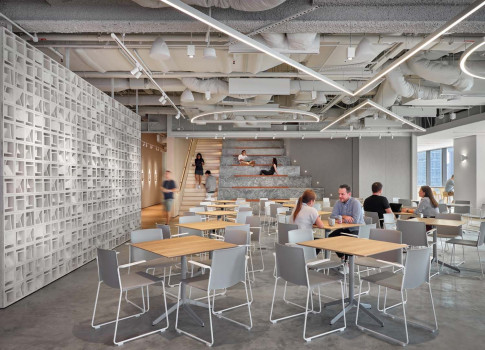A Deconstructed-Roof Facade Gives Volumetric Uniqueness in DSN Studio



DSN Studio is an architectural design and construction office located in Karawaci, about 20 kilometres outside Jakarta, which predominantly has housing estates with fixed urban typology. The office is situated between two tropical-style houses with Dutch gable roof structure. Therefore, the roof is deconstructed and made into the face of the building, giving a sense of belonging and volumetric uniqueness.

The space programming consists of three floors. The first floor accommodates six cars and one meeting room. The second floor has the actual open space office, while the third floor serves as the dining, pantry, multi-function space, and break room. All wooden materials used are furniture industry byproducts obtained from Central Java.
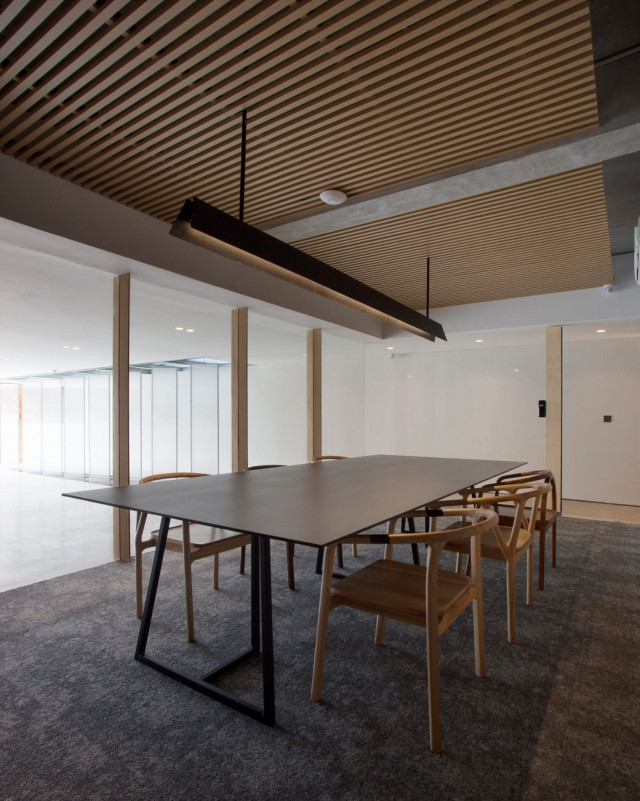
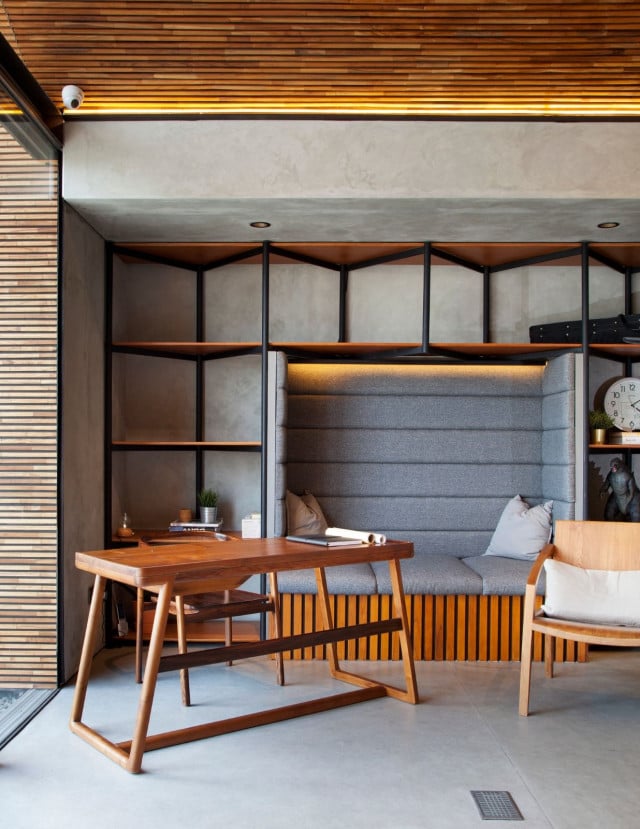
Humanising the entrance, a wooden entry portal is created and squeezed into human scale. It serves as a foyer for guests as well as a rain reservoir for plant irrigation in the office. The entrance then opens to a corridor that leads to the meeting room and stairs.
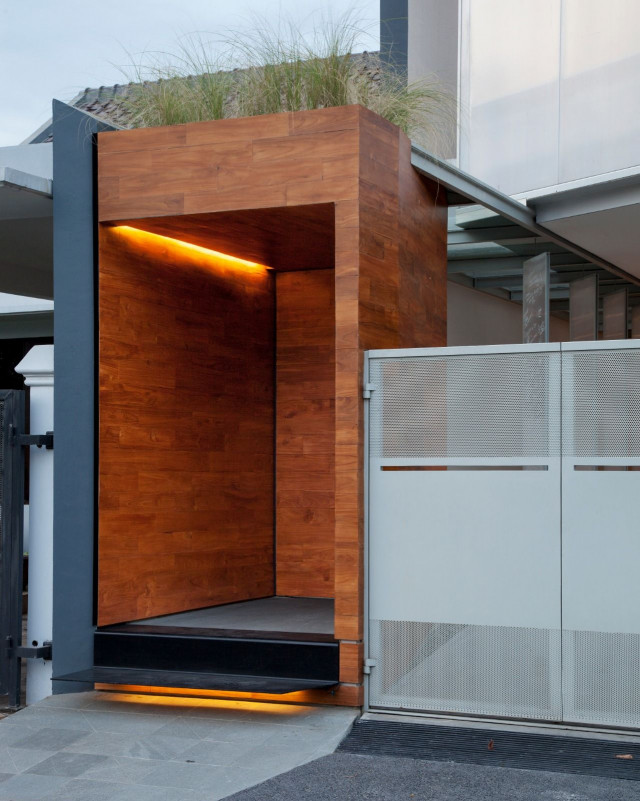
Upon opening the door, the space will be immediately felt as if it broadens infinitely. This spatial effect is achieved by using glass roof and installing polycarbonate panels between the carport and corridor to limit visual periphery without compromising the openness of the space.
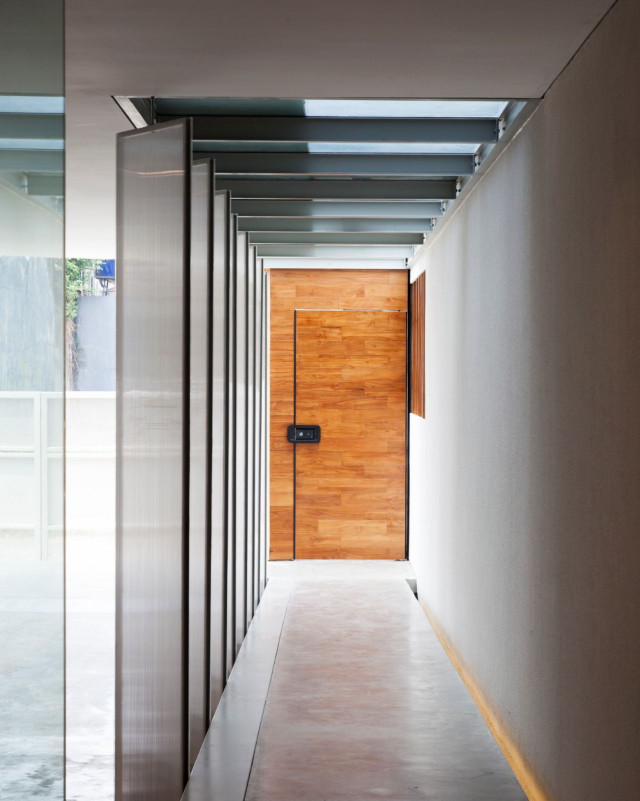
The meeting room itself is simply a room with glass partitions that also act as whiteboards. Helping with acoustic issues, carpet tiles are used to reduce echoes by almost 40 percent. There are other two rooms inside the meeting room, water pump room and a small powder room. Both are camouflaged along the wall, tucked under the stairs.
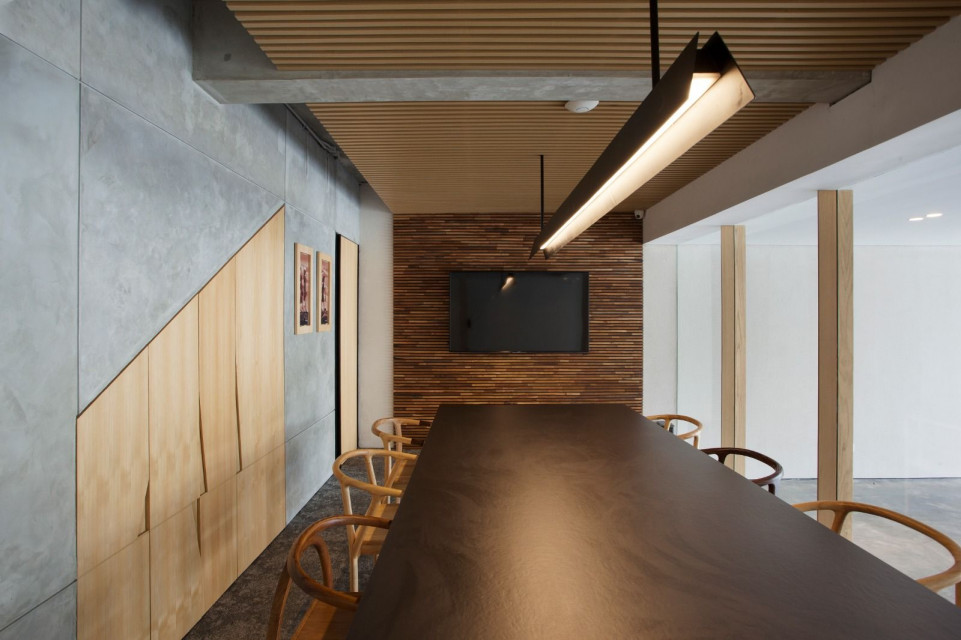
Onto the second floor, another foyer that also serves as the stairs landing is added. Murals of DSN founders and early projects graphics are put on the wall to give the office a fresh sense of history. Since it is the main floor where people do most of their activities, the open space office has a higher ceiling, filled with natural light.
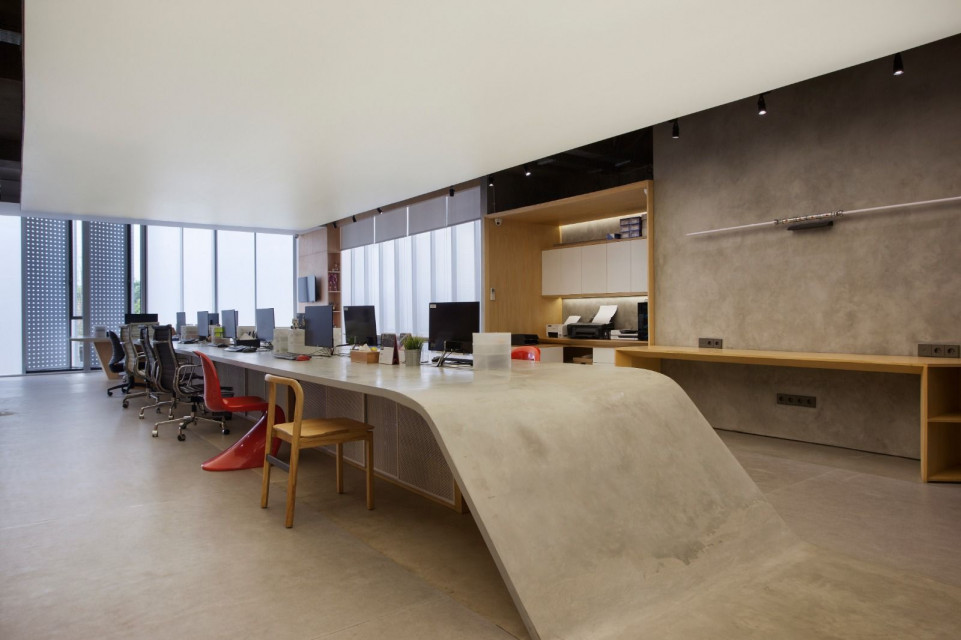
A tough polycarbonate called danpalon is used as the facade material. It corresponds well with the purpose of limiting visibility to the outside, reducing visual distractions, while still allowing sunlight to come through inside. A simple linear-type table formation with cabinets surrounding the tables is integrated to ensure a more efficient interaction between working and storage space.
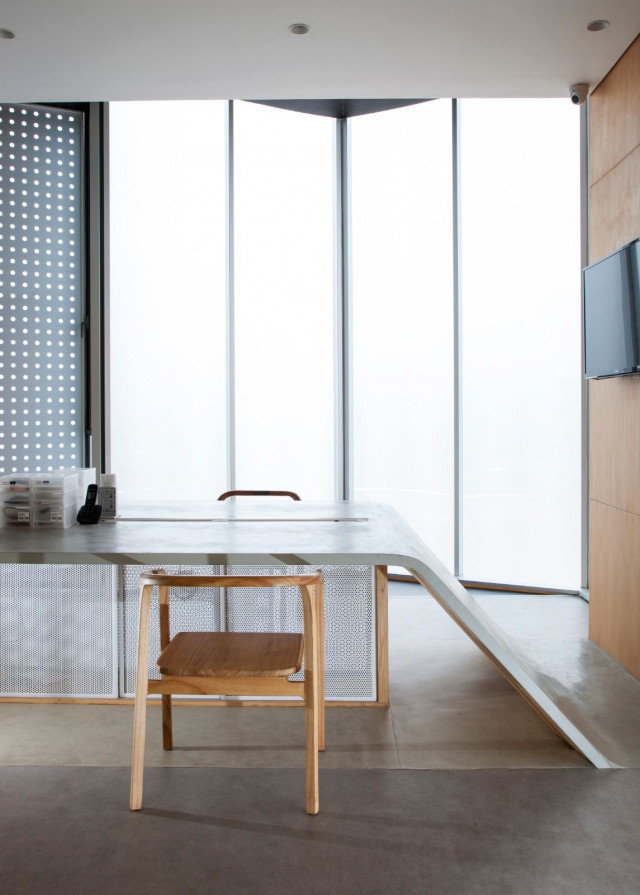
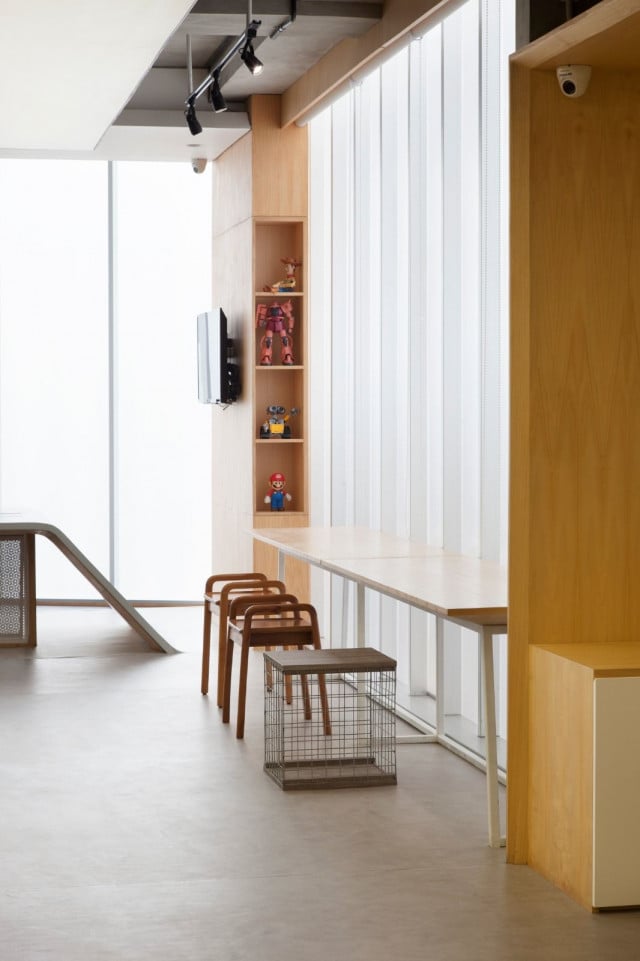
The third floor is designed specifically so that the staffs can have a room to relax and do constructive activities outside working hours. It is divided into indoor and outdoor area, equipped with sliding doors to allow them merging into a larger space suitable for many functions. A pantry with multi-use table and chairs are located indoor, while the outdoor area also serves as the end of the office journey where people can enjoy an almost unlimited view of the landscape and still be reminded of the office’s surroundings essence.
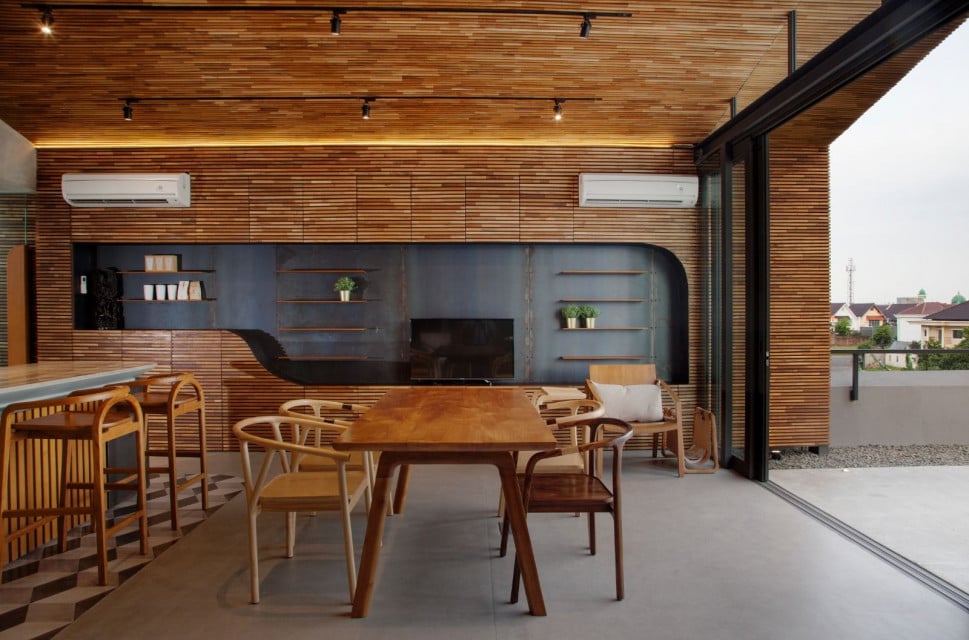










 Indonesia
Indonesia
 Australia
Australia
 New Zealand
New Zealand
 Philippines
Philippines
 Hongkong
Hongkong
 Malaysia
Malaysia


